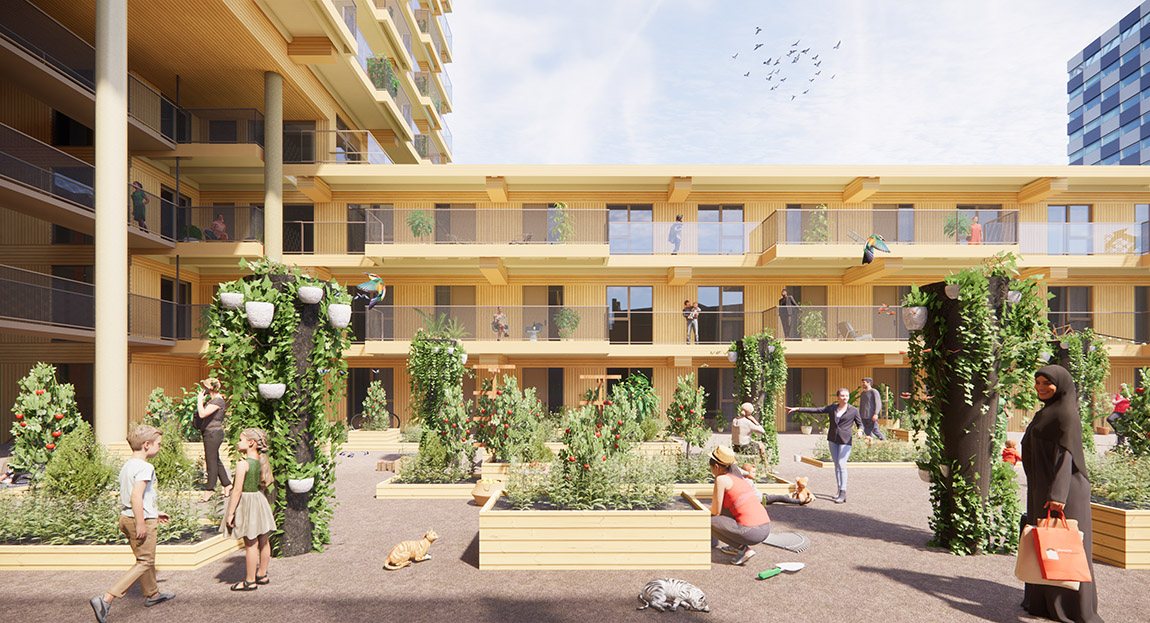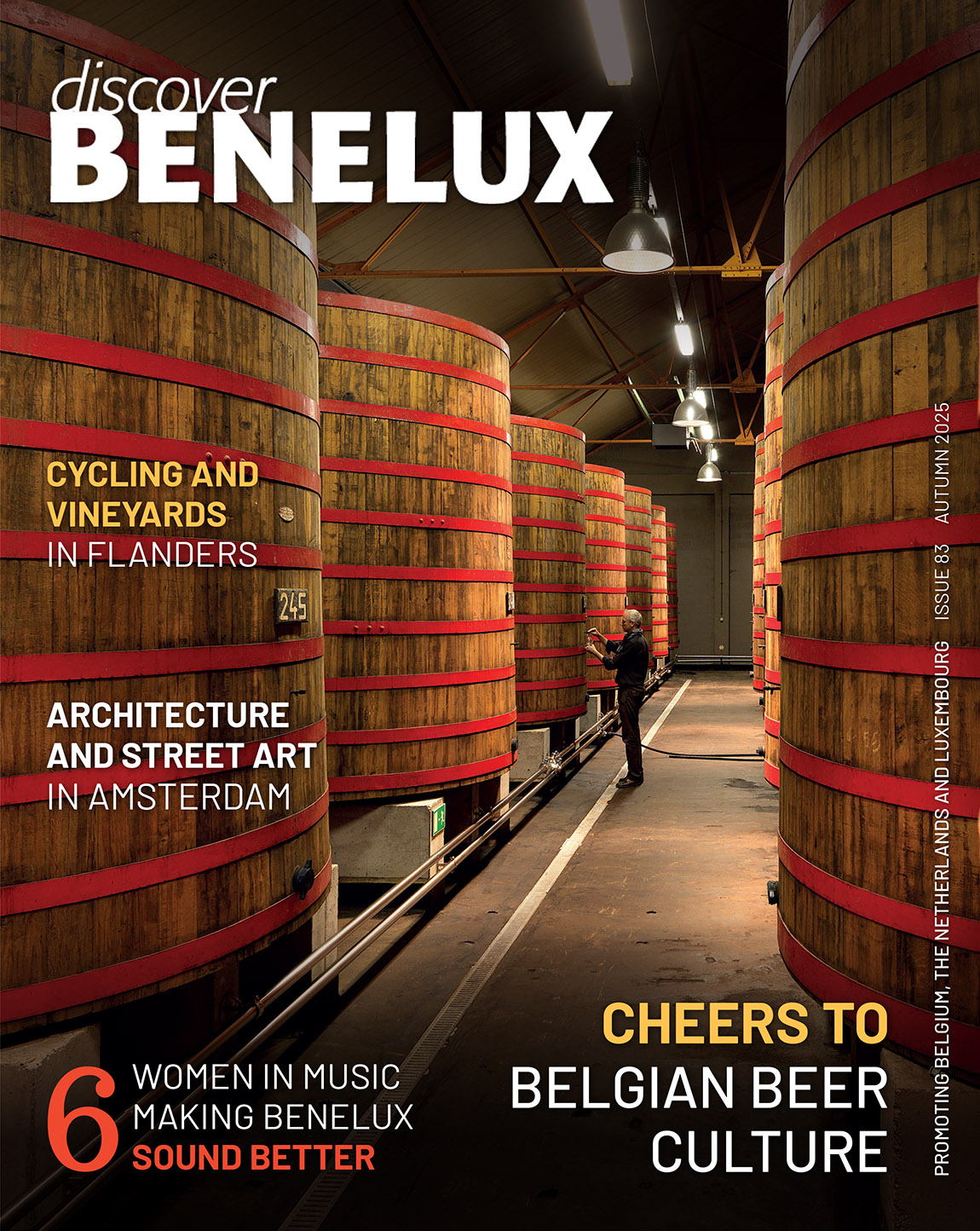SAWA: Building Our Future
TEXT: JENNIFER DEWAR | PHOTOS: SAWA

SAWA’s western facade on Kratonkade in Rotterdam’s Lloydkwartier neighbourhood. Photo: ©Mei architects and planners
According to the UN’s biodiversity conference in Montreal in 2022, “cities are on the front line of the socio-economic impacts of climate change and ecosystem loss”. Many of them are already taking ambitious action to protect and restore nature. One such city is forward-thinking Rotterdam.
With the devastating loss of nature and its impact on biodiversity, namely animal, bird and insect life, the solution is clearly to bring nature into the centre of cities. Not only does this help the natural world, but it also brings a healthier environment for humans. According to the World Health Organization, 99 per cent of the global population is exposed to pollution, significantly increasing the likelihood of developing serious diseases such as cancer and heart disease. Many studies have also been done on the calming effects of plants and nature on mental health. Humans cannot live without a balanced ecosystem – we are part of the natural world too, after all.

SAWA’s green terraces are a mini urban oasis. Photo: ©Beeldenfabriek
To take on this challenge requires bold new thinking, taking the way we live – literally and metaphorically – back to the drawing board. Which is exactly what the Dutch architectural firm Mei architects and planners did when they created SAWA, often referred to as the healthiest building in the Netherlands.

SAWA has a collective vegetable garden, a shared garden and repair room, which further encourage supportive community living. Photo: ©Mei architects and planners
Reimagining how we live
Commissioned by Nice Developers & Era Contour, construction of SAWA began in August 2022. With private financing, the developers could be ambitious in realising their vision. An architectural masterpiece situated in Rotterdam, SAWA is a 50-metre-high residential building containing 109 apartments and made predominantly from wood (using very little concrete). The aim was to create a mix of private apartments and affordable housing (50 per cent of mid-market rent) with a design which encouraged community living in a healthy environment. The layout of the building deliberately encourages more rather than less contact with neighbours.

An example of a SAWA interior. Photo: ©Beeldenfabriek
Commenting on the community aspect of the building, managing director of Mei and owner of Nice Developers, Robert Winkel said: “When we consulted locals before construction about what they wanted, community living was key. Some of our consultations were carried out via social media during Covid lockdowns, so I think it really made people reflect on what was important, and what we as humans need to live healthier. People were keen to live in a mixed environment with different ages and different socioeconomic backgrounds. For many, living in SAWA represented a fresh start, an opportunity to live in line with their values.”
The building has large green terraces, which include 140 nesting boxes for birds, bats and insects, and are maintained by an external contractor. There’s a collective vegetable garden, a shared garden and repair room, which further encourage supportive community living. It also has an energy-neutral status, using remote solar energy from PV roof panels that also provide the energy for the residents’ electric bikes and cars.
The design of this circular-stepped building was inspired by the Eastern rice fields connected to the history of the Lloydkwartier district, where SAWA is situated, a nod to the historical links with Indonesia when this area was a thriving port, just as it is today. The wood used was sourced from sustainable forests in West Germany, where for every tree felled, another four were replanted (6,000 in total). Wood, in fact, stores CO2, which is another good reason to use this as a building material. Winkel: “Mei’s aim was to create a building that captures CO2 rather than emitting it. So, in effect, it produces carbon credits.”

Abundant plants help boost biodiversity. Photo: ©Mei architects and planners
Sharing knowledge and best practice
The pace of globalisation, technological change and consumer behaviour have had a profound and sometimes devastating impact on our world. However, the upside to this is our ability to find solutions and share best practice with other cities dealing with the same issues. Nice Developers is funded by external capital, so they can make standalone buildings across Europe and overseas. They have the expertise to build on top of existing buildings with over four floors, to make them more eco-friendly and people-friendly. Not only is SAWA the healthiest building in the Netherlands, but it is also a beacon of hope for other cities dealing with the same challenges. Tackling climate change and the destruction of our natural world means changing the way we live. The upside to this could be a more compassionate, community-based living, which has multiple benefits. SAWA stands as a testament to what is possible when a positive solutions-based approach unfolds. They’re clearly called Nice Developers for good reason.

SAWA makes green living in an urban environment possible. Photo: ©Beeldenfabriek
Subscribe to Our Newsletter
Receive our monthly newsletter by email





